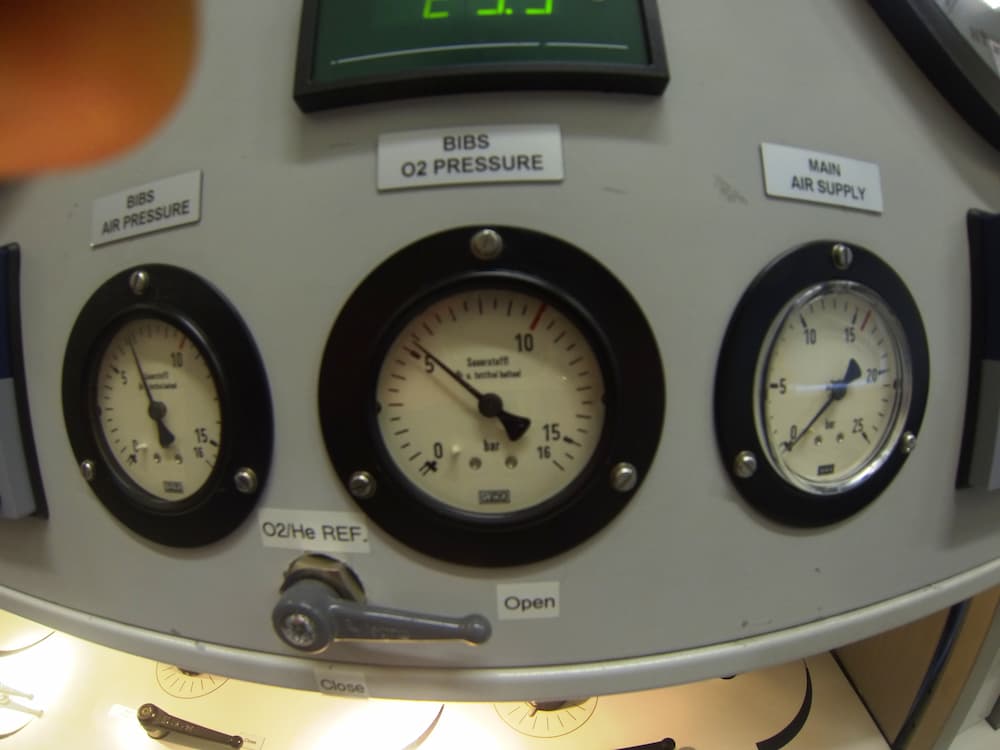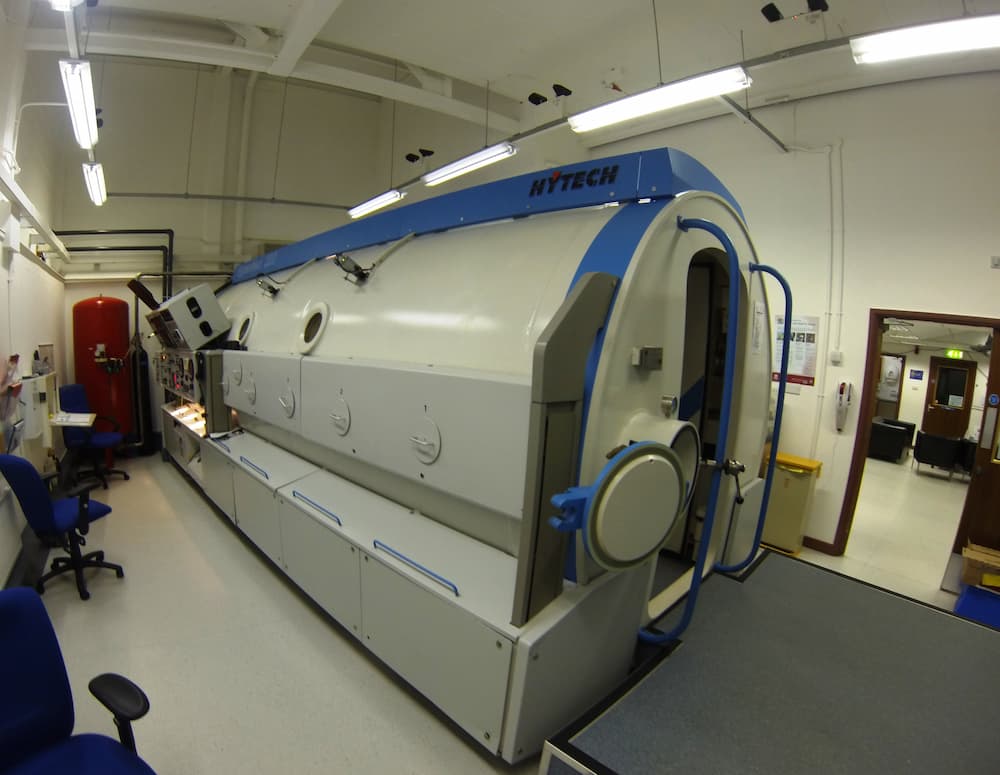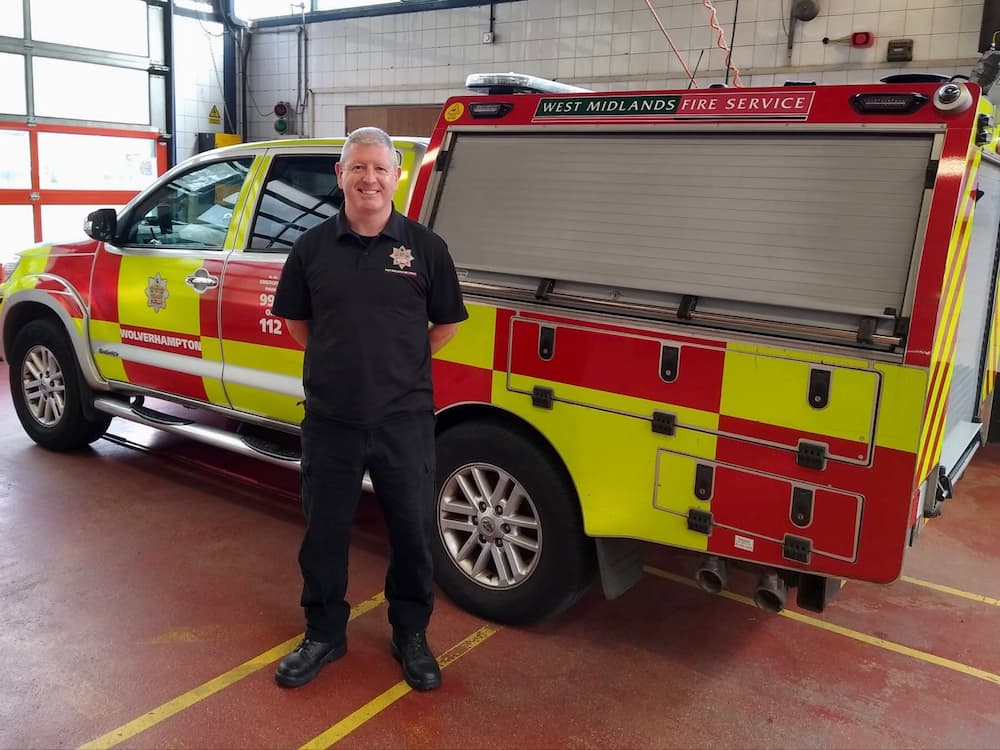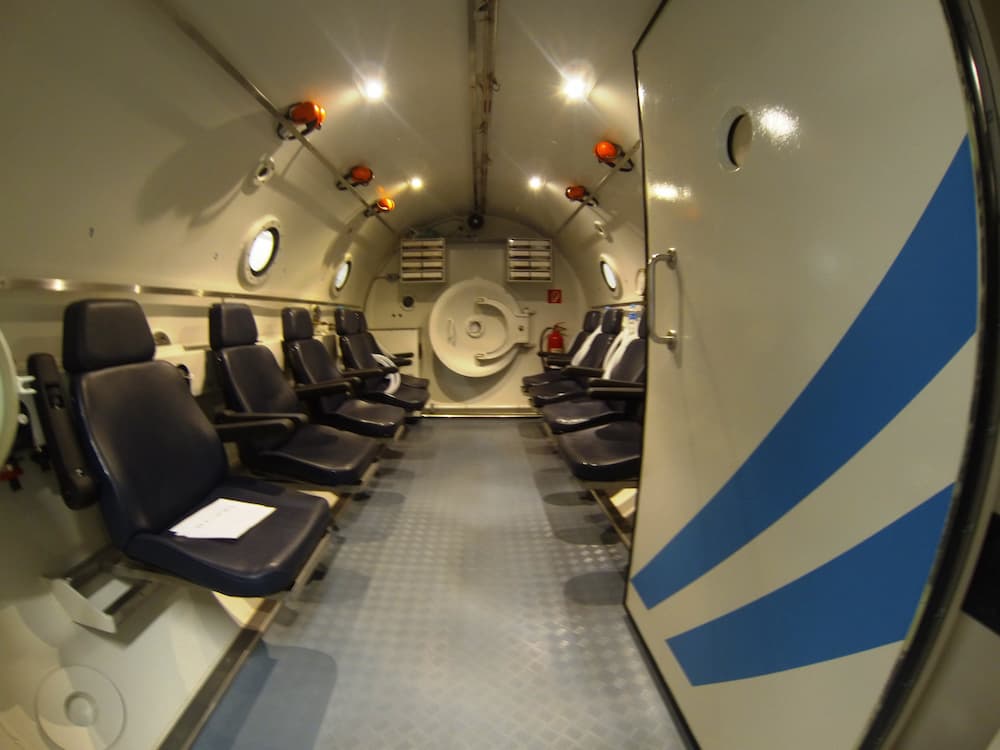Firefighters with Long COVID receive hyperbaric oxygen therapy
Staff from across WMFS have been given access to the Rugby-based centre’s hyperbaric oxygen therapy (HBOT), with one describing the results as ‘astonishing’.
Responding to treatment
Staff from across WMFS have been given access to the Rugby-based centre’s hyperbaric oxygen therapy (HBOT), with one describing the results as ‘astonishing’.
Patients are seated in a specialist six-metre-long chamber in which the pressure is raised - to the equivalent of 14 metres below sea level - before they breathe in oxygen via a mask. The higher pressure means more oxygen gets into the blood and to cells that need repair.
WMFS staff who have benefited from visiting the facility have had 90-minute sessions once a day for three weeks.

“We have prioritised the health and wellbeing of our staff throughout. This has enabled them to keep delivering our core services as well as provide a wide range of additional support for the most vulnerable members of our communities.
“As we all transition to living with COVID, the health and wellbeing of our staff remains an absolute priority. Several of our staff have had severe, longer-lasting COVID symptoms. We’re delighted to have been able to offer them the hyperbaric oxygen therapy, and it’s great to see many of them responding so well.”
Dr Michael Gonevski, Hyperbaric Physician and Medical Director of the Midlands Diving Chamber, said: “It’s our absolute pleasure to be helping firefighters and staff from West Midlands Fire Service with their recovery from Long Covid.
“We use hyperbaric oxygen therapy to reverse the damage done by severe hypoxemia - low levels of oxygen in the blood - and hypoxia, which is low levels of oxygen in the tissues.
“The anti-inflammatory effects of hyperbaric oxygen therapy can counter the increased inflammation and neuro-inflammation common to COVID-19 and reverse the oxygen debt on a cellular level.
“Oxygen delivered in this way can not only address someone’s low oxygen levels but the effects this can have on their tissues.
“In the cases that we have seen, some of the more common symptoms such as fatigue, ‘brain fog’, insomnia and neurological problems respond extremely well to the therapy. Most of the patients who have Long Covid see significant improvement after only ten to fifteen sessions in the hyperbaric chamber, with some of them getting completely back to normal.”


In their own words - cases studies from our staff who've benefited
Lisa said: “As time went on, I just didn’t seem to be getting back to my normal self. I was extremely fatigued, almost zombie-like.
“I’d be breathless after climbing a flight of stairs, which was quite concerning as I’ve always kept myself relatively fit for my role.”
Lisa was also affected by ‘brain fog’ and experienced a range of further physical symptoms.
“I’d find myself in a bit of a haze when trying to carry out simple problem solving, decision making and organising. I just couldn’t retain information and recall was also an issue. I would feel disoriented at times and my balance was also affected, mainly on climbing stairs.
In November 2021, the WMFS Occupational Health team offered her a course of hyperbaric oxygen therapy - and she says it was a game changer.
“I honestly don’t know what I’d have done without it, or even whether I could have returned to work. The first week was extremely tiring, as I got used to the travelling and the treatment on top of COVID symptoms.
“But I persevered and the fatigue lifted after the second week. After week three - wow – all my symptoms had gone. I was back running, in the gym, swimming and the stairs were no longer an issue.
“The difference between pre- and post-treatment cognitive tests was astonishing. It suddenly became clear why I’d been feeling like a zombie.
“I’m now back at work and will hopefully be back up to full duties by May. It has been a long journey, but I honestly don’t think this would have been possible without the chamber sessions.”
He was rushed to hospital with a suspected stroke, which was later ruled out after tests. But the following months saw Phil experience symptoms including blood pressure spikes, palpitations, dizziness and ‘brain fog’, as well as gastro-intestinal problems.
Phil said: “It also affected me mentally. I often thought I was dying. So many tests came back negative that it felt like the doctors didn’t believe me or had run out of ideas. The only treatment they offered was blood pressure tablets.
“After months of feeling so ill and not knowing why, being able to have the hyperbaric oxygen therapy really helped both physically and mentally.
“To start with, it was a bit weird going into the chamber, but I soon felt comfortable with it. The staff were very nice and helpful. They explained the process and how it works.”
Phil says that the treatment got rid of many of his symptoms and lessened others.
“Having the treatment in November gave me the confidence to socialise a little at Christmas. Although I still had some symptoms, I finally felt positive about getting back to normal.
“Unfortunately, I caught COVID again in January and it knocked me back a bit. I’ve been back to the chamber for more treatment and am still feeling positive about the future.”

His symptoms were very similar to those of Lisa and Phil (above). Kash said he “had reached the point where I was willing to try anything” when he began his hyperbaric treatment.
“I feel exceptionally lucky and privileged to have had the opportunity to be treated. I’d got to a place of despair, thinking nothing would improve things. My GP did blood tests and told me to rest, but no amount of rest was helping.
“Having access to the treatment via WMFS has had a really positive effect on me and my wellbeing. This is not something I would have usually made the time for but, having gone through the process, I recommend it for people in similar situations.”
Kash described his treatment experience.
“The mental and physical tests on the first day provided some clear evidence that things weren’t right. My oxygen saturation was low, my peak flow was limited and the basic sit-stand test for one minute felt like running a marathon. My mental tests showed the effects of the brain fog very clearly.
“The staff at the centre were very friendly. They gave me an idea of what to expect, but the experience is very different to anything I’ve done before.
“You get changed into medical scrubs and sit in an allocated seat. They slowly pressurise the chamber. As this happens you have to keep clearing your ears. Once at depth, you’re on the oxygen mask for three 30-minute periods, with breaks in between, then you ‘surface’ again.
“Having a member of staff and other people with you, who are going through the same thing, helps you feel safe and looked after.
“I started to notice changes from the first week. My brain fog started to clear, which helped me to feel more positive and upbeat.
“Breathing was becoming easier, I was standing up straighter and, towards the end of the first week, I noticed that my pain was reducing as well.
“I started to have more energy. It sounds silly, but I cleaned my shoes and cut my grass, which would have taken too much effort before the treatment.
“I have to keep reminding myself that progress isn't a straight line. Some days were better than others but, overall, the lack of pain and ability to think more clearly had the biggest positive impact for me. I’m less tired, able to do more and hopeful that will continue to improve.”

